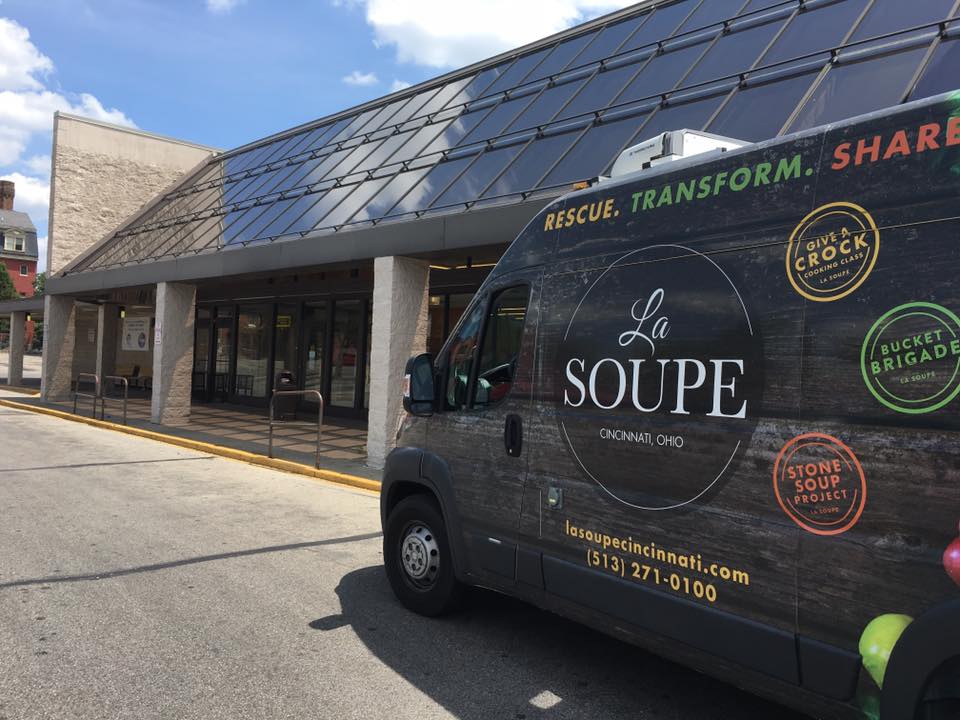A bowl of “soupe” but so much more!
Roughly a third of the food produced world over is wasted- a fact that you will encounter everytime you engage in a discussion on the issue of food waste.
If we managed to say, rescue a percentage of this food going to waste, what do we do with it? Distribute it to those in need comes the immediate answer. While it does work, we think that the solution ends there. When I spoke to Suzanne Deyoung, founder of the non-profit La Soupe Cincinnati, I realized that there are multiple layers to this whole solution of redistributing food. And we definitely need to understand these layers if we are trying to build a better food system.
An accomplished chef with a career spanning more than 25 years, Suzy Deyoung, founded the famous Cincinnati restaurant La Petite Pierre with her sister Michele Vollman. The restaurant is a tribute to their father, Pierre Adrian. But Suzy’s interests in food went beyond the culinary aspects, and she wanted to make a difference for those who needed it the most. In 2014, she left her restaurant and launched La Soupe as a means to rescue surplus produce. La Soupe has grown leaps and bounds since its initial days. What started as an initiative rescuing about 100 pounds a week is now a movement which has saved 275,000 pounds of produce in the last year itself. For her efforts, she was awarded the Jacqueline Kennedy Onassis Award for Outstanding Public Service Benefiting Local Communities, given by the Jefferson Awards Foundation, and named Woman of the Year-2017 by The Enquirer and the Greater Cincinnati Foundation Woman of the Year Award.
I caught up with Suzy over the phone to talk about food waste, the role of chefs and the importance of education.
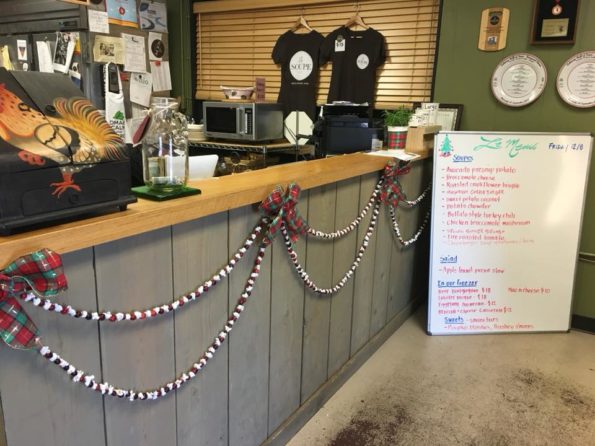
The Facebook Post
Every journey has this one moment when things change. For Suzy, one year into her La Soupe journey, it was a Facebook post from a school in Cincinnati which changed it all.
“Oddly enough we are dealing with the same thing today. Today Cincinnati public schools are called off because it’s too cold- it’s sub-zero right now. When I found that particular post, the conditions were similar. You see the kids are fed breakfast and lunch at the school, but on top of that, they get packages to take home for the weekend. A teacher from Oyler school put out a post requesting food for the children to take home. These packages are their only source of food. If they don’t have school on a Friday, they don’t get these power packs for the weekend. We at La Soupe had food, and we started bringing it to the school. From there it just grew, with schools finding out one by one. We always had the intention of distributing food, but we wanted to do it mindfully and respectfully. There is so much food wasted every day, why can’t we collect that, turn it into something and give it to people in a mindful way? That’s pretty much how it all started. The intent was always there, but I did not have my distribution set up, and I was mainly relying on Facebook posts. It did not even occur to me to distribute at the school level, till I came across that post.”- says Suzy
Today, La Soupe collects surplus produce from grocery stores and farmers and converts it to products like soups, salads, sides which are distributed in schools, churches, and at family programs.
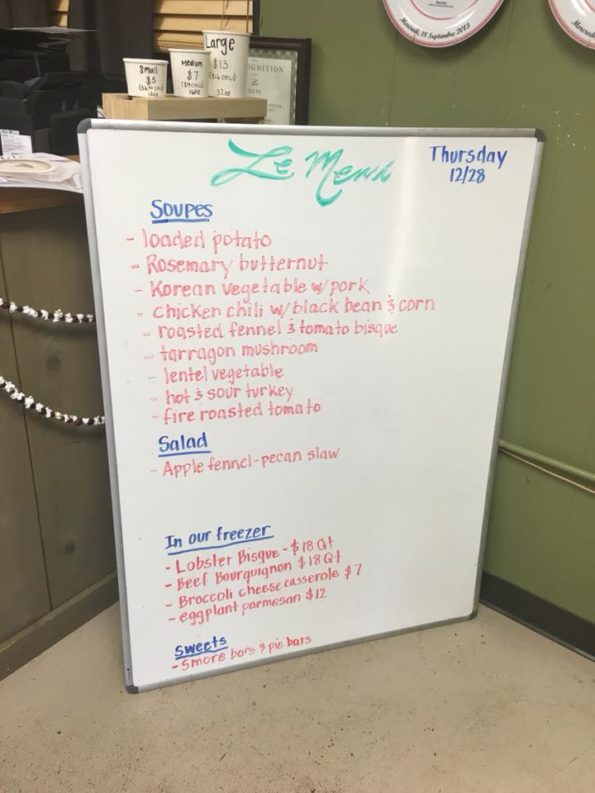
The Programs
Suzy’s aim is to not only utilize the produce but also increase awareness about the quantity of food wasted, and the lack of food knowledge among people. La Soupe has different programs to achieve these objectives. The Programs are called the “Bucket Brigade”, “Soupe Mobile”, “Stone Soupe” and “Cincinnati Gives a Crock”. Suzy adds that the programs evolved organically. For eg, the Bucket Brigade, she shares, was born out of an unfortunate incident where Suzy had injured her hand. Having almost 1200 pounds of produce ready to be processed, she reached out to the chefs in her community requesting help. The overwhelming response she got that day continues to be a part of La Soupe even today. Chefs involved in this Brigade, process rescued produce or overages and give them to La Soupe, which distributes the same.
The Soupe Mobile takes La Soupe products to different communities and employs a “pay from your heart” model of payment.
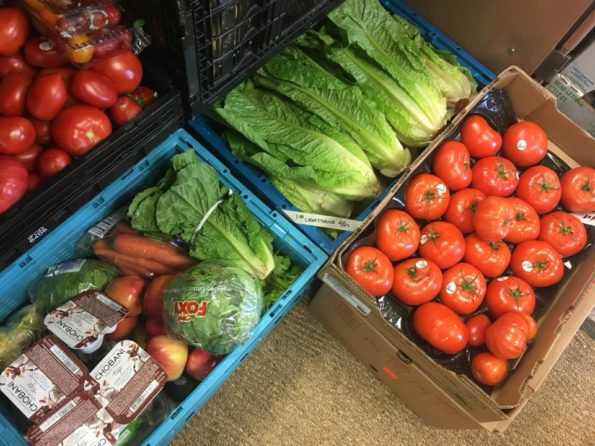
Talking about the “Cincinnati Gives a Crock” program, Suzy shares that she was requested to teach cooking to a few seniors in a school. But when she posed a basic question about vessel sizes at home, among a group of 17 students she realised that the issue of hunger ran deeper than what we comprehend. “We came to know that only one of these 17 children even had a stove. So why was I teaching them how to cook, if they could not repeat it when they went back home? I felt like I was giving them a disservice and not a good service.” Suzy mentioned the incident to a friend, and between them, they thought that along with teaching these children, they also needed to provide basic equipments to cook the food. “My friend had a birthday party and asked everyone to bring a crock pot, which we donated. We are now in 7 schools teaching students with a team of volunteers, who believe the children need to be prepared for themselves.”
@LaSoupeCincy founder Suzy Deyoung talks about #foodwaste and soup with a purpose. Click To TweetInspired by chef and philanthropist José Andrés, Suzy initiated the The Stone Soupe program. Paella pans are used to cook for a large number of people using rescued food, in an attempt to highlight the enormity of the issue. “We take these big paella pans to schools and communities. We use it for fundraising and to show people that all this food was going to be thrown away –but here we have used it to create a beautiful meal. We can feed almost 300 people with the food from these pans.”
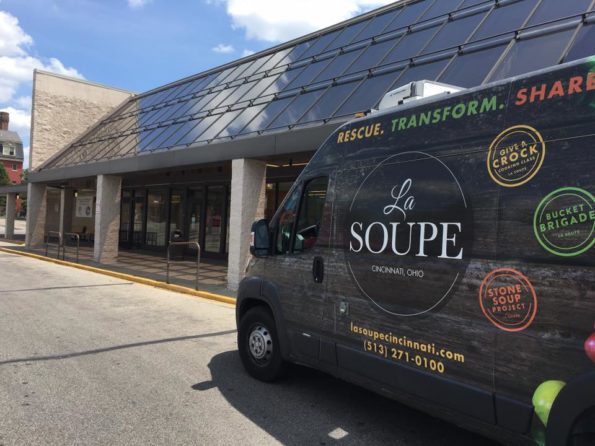
Response and Responsibilities
‘Suzy shares that the visual impact of cooking with this food definitely sends a strong message. “Visual is everything. In our store, when the food comes in, it is literally right in front of the people who walk in. They are shocked and ask- this is going to the landfill-why? People realise it’s not a food safety issue, it’s not a cosmetic issue or an over-ordering issue, it has nothing to do with the quality of the product. This is good food which everyone can eat, and it makes such a big difference when it reaches people who respect it.”
With many chefs participating in this battle against food waste, I ask Suzy how does she see their influence in making a change. “Chefs are definitely part of the answer we are looking for. This Summer I had a farmer drop off 16 cases of harvested produce because he could not find an end user. Every small restaurant that works with me, I gave them a case and asked them in turn to make a batch of soup with whatever they have. We had enough food to feed 400 people just that one day. We also saw more variations of tomato soup than we ever knew was humanly possible,” Suzy adds.
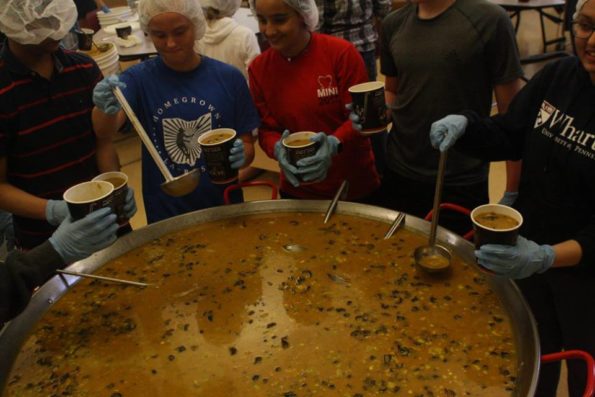
Connecting polar issues of surplus and hunger, Suzy shares that finding a solution lies somewhere in between. “What we need is a sustainable second-tier system, where profit is not the motivator. A grocery store in a food desert, where there is some value for the food, but people need not jump through the hoops to get it. The Daily Table in Dorchester, Massachusetts is an example of this model.”
Remarkable efforts at such a big scale, and yet Suzy sums it up quite simply. “All I am trying to do is to keep the food, in the food system and out of the landfills for the longest period of time.”
For more information visit https://www.lasoupecincinnati.com/.
You may also like.
